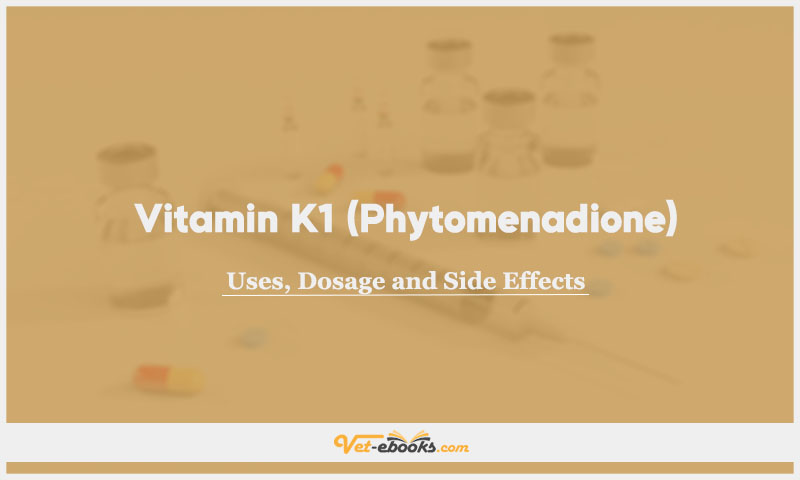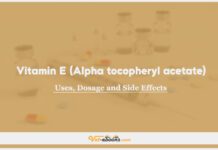Vitamin K1 (Phytomenadione) In Dogs & Cats: Uses, Dosage and Side Effects

Overview
- Involved in the formation of active coagulation factors II, VII, IX and X by the liver.
Uses of Vitamin K1 (Phytomenadione)
- Treatment of toxicity due to coumarin and its derivatives.
- Before performing liver biopsy in patients with prolonged coagulation times.
Dose of Vitamin K1 (Phytomenadione) in Dogs and Cats
Dogs, Cats:
Coumarin rodenticide toxicity:
- Known 1st generation coumarin toxicity or vitamin K1 deficiency:
- initially 2.5 mg/kg s.c. in several sites, then 1–2.5 mg/kg in divided doses p.o. q8–12h for 5–7 days.
2. Known 2nd generation coumarin (brodifacoum) toxicity:
- initially 5 mg/kg s.c. in several sites, then 2.5 mg/kg p.o. q12h for 3 weeks, then re-evaluate coagulation status.
- The patient’s activity should be restricted for 1 week following treatment.
- Evaluate the coagulation status 3 weeks after cessation of treatment.
3. Known inandione (diphacinone) or unknown anticoagulant toxicity:
- initially 2.5–5 mg/kg s.c. over several sites.
- Then 2.5 mg/kg p.o. divided q8–12h for 3–4 weeks.
- Re-evaluate coagulation status 2 days after stopping therapy.
- If the prothrombin (PT) time is elevated, continue therapy for 2 additional weeks.
- If not elevated repeat PT in 2 days.
- If normal, the animal should be rested for 1 week, if abnormal then continue therapy for an additional week and recheck PT times as above.
4. Liver disease (pre-biopsy):
- 0.5–1.0 mg/kg s.c. q12h.
- After 1–2 days re-evaluate coagulation time and if normal proceed with biopsy.
- If not, the dose should be increased and the procedure delayed.
- If there is further minimal improvement in coagulation times, fresh frozen plasma may be required.
Drug Dosage Calculator
You Should Give:
Side Effects of Vitamin K1 (Phytomenadione) in Dogs and Cats
- Anaphylactic reactions have been reported following i.v. administration.
- Safety not documented in pregnant animals.
- Haemolytic anaemia occurs in cats when overdosed.
Contraindications of Vitamin K1 (Phytomenadione) in Dogs and Cats
- Avoid giving i.v. if possible.
Some Notes:
- Various drugs antagonize the effects of vitamin K, such as aspirin, chloramphenicol, allopurinol, diazoxide, cimetidine, metronidazole, erythromycin, itraconazole, propranolol, thyroid drugs, and coumarin-based anticoagulants.
- When patients are on other long-term medications, it’s recommended to consult specific literature to assess potential interactions.
- Oral vitamin K absorption is hindered by mineral oil.
- Prolonged significant anorexia can lead to deficient states of vitamin K.
- Despite being a fat-soluble vitamin, vitamin K behaves biologically like a water-soluble vitamin, with a relatively short half-life and no significant storage reserves.
- It may take 6–12 hours for vitamin K to take effect.
- Oral absorption in dogs is enhanced 4–5 times when administered with tinned food, particularly those with higher fat content.
- Prothrombin time is the preferred method for monitoring therapy.
- When injecting subcutaneously or intramuscularly in patients with bleeding tendencies, use a small gauge needle.
Tip
Do You Want To Increase Your Veterinary Knowledge and Practical Skills?
You Can Now Browse and Download +3000 Books For Veterinary Professionals & Students Online.
Download Veterinary Books




















